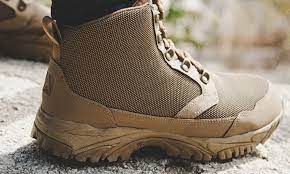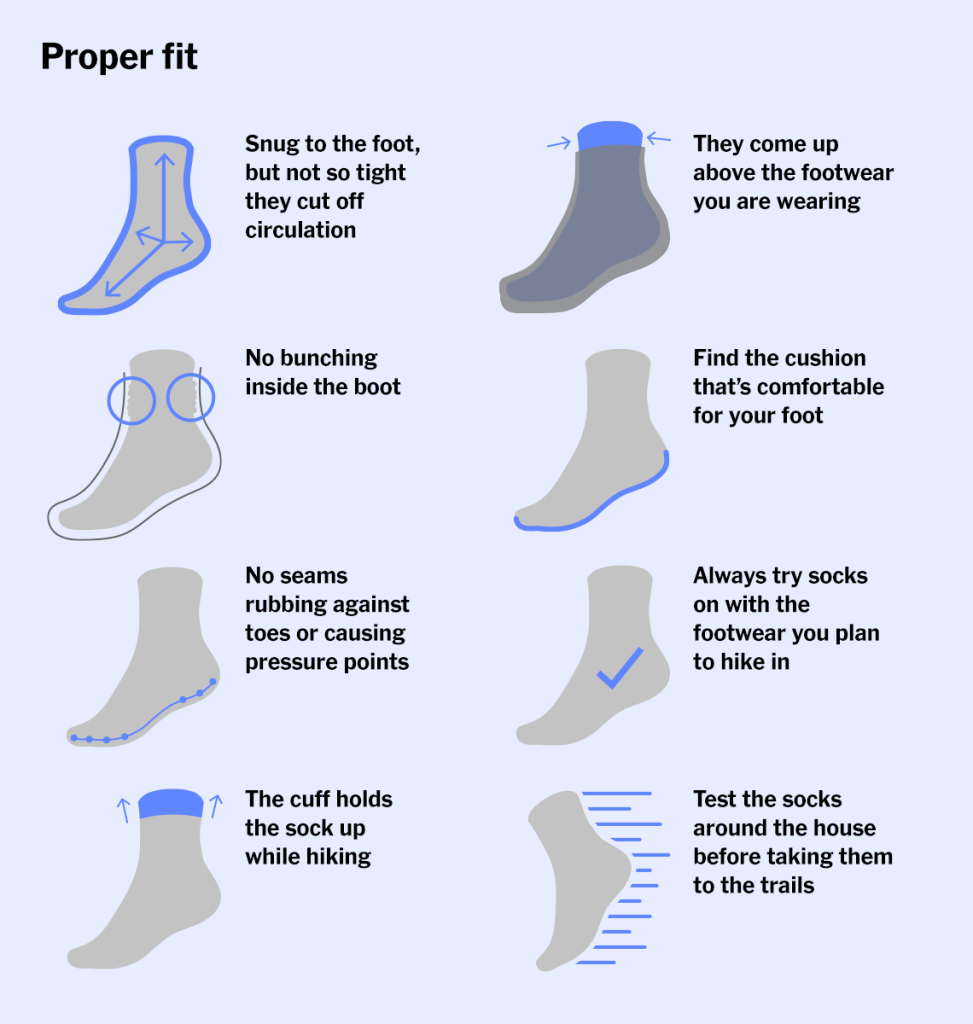How big should the hiking boots be? Make sure to size up – your feet will swell after a long day of adventure. Walking and standing are practically inevitable, but why does it happen? The answer lies in the science: as you walk or stand around, blood tends to pool at the bottom of your feet, which causes them to expand.
Buying hiking boots that account for this swelling will make all the difference on extended treks through nature. Knowing when one should “size up” can be tricky, though; read more below about how much breathing room is ideal before taking those first steps into wilderness bliss.
Don’t let your boot-buying experience end in soreness and disappointment. Ensure you get the best fit possible by trying on your boots at the most opportune time: towards the end of a long day when both your feet have reached their naturally swollen state.
Follow this advice for a wonderful hiking journey with comfortable footwear – read ahead to find exactly what you need to know about finding those perfect pairs of shoes.
How to Tell If Hiking Boots Are Too Big

Many hikers have experienced the challenge of finding that perfect pair of boots – ones that keep their toes comfortable while they adventure and explore. Buying new hiking shoes can be tricky, so knowing how much room should exist in the toe box for a proper fit is important.
After years on many trails with various kinds of footwear, I’ve cultivated my knowledge about sizing up your next set of kicking soles. Here, you’ll discover all you need to ensure an ideal experience when selecting those trusty trail companions.
Those Boots Should Be Comfortable
While wearing your boots, please take a moment to analyze their comfort level. Ask yourself if the boot feels comfortable enough or if you should reconsider another pair. If anything feels strange – be it tight seams that imprint on your foot or pinching sensations in the forefoot region when you move around – consider this as potential signs of discomfort and opt for trying other pairs until one fits just right.
Not Too Tight or Too Loose
Getting your hiking boots fit just right can make all the difference when you hit those trails. Too tight, and they’ll cause blisters from rubbing; too loose, and your feet slip around as you walk – neither sounds much fun. Ensure that laces are properly done up for an ideal balance; if there is extra space at any point, a narrower or wider boot might be required to achieve optimum comfort on long treks.
Your Toes Need Room to Move
It’s time to shop for a new pair of boots, and you want something that won’t leave you with blisters. Ensure your toes have enough room in the boot, at least an inch between them and the tip.
You can measure it out if necessary or remove the insoles. Doing so will ensure comfort on hikes – as feet swell during longer journeys – and added stability; no more bashing into ends when going uphill/downhill, either. An extra bit of space makes all the difference
3 Sizing Checks to Perform When Trying On Boots
Finding the perfect pair of hiking boots can be tough, but with a few considerations, you’ll soon be set for your next trail-trekking adventure.
Ensure that there isn’t too much space in the toes and heel areas or around the ball or arch of your foot – this could cause issues when walking long distances. Additionally, ensure laces are snugly tied before hitting up those trails so you enjoy every minute of the journey ahead.
Wear The Socks You Plan to Wear While Hiking
When shopping for the perfect pair of hiking boots, it’s essential to plan. Stash your thickest socks in your purse or pocket – you’ll need them at the store. That way, while measuring up before trying a new boot on, make sure they fit exactly what will protect your feet out in the wilds. Don’t let an ill-fitting sock surprise ruin otherwise great outdoor adventures.

Simulate The Movement Your Foot Makes When Hiking
Try out the feeling of your new hiking boots by rolling your foot from heel to toe in an action that mimics actual hiking. Remember, if you experience any slipping motion while doing this, it’s a sign that they are too large for you – but why not take them for a walk uphill or on an incline and get a feel for what your feet will be like come trail-time?
Test The Ankle Support
To ensure optimal support and comfort when hiking, it’s important to check that your boots fit snugly. Try rolling your foot from side to side while wearing them – if you have more than a thumb width of space between the boot and your foot, they may be too big for safe use outdoors

